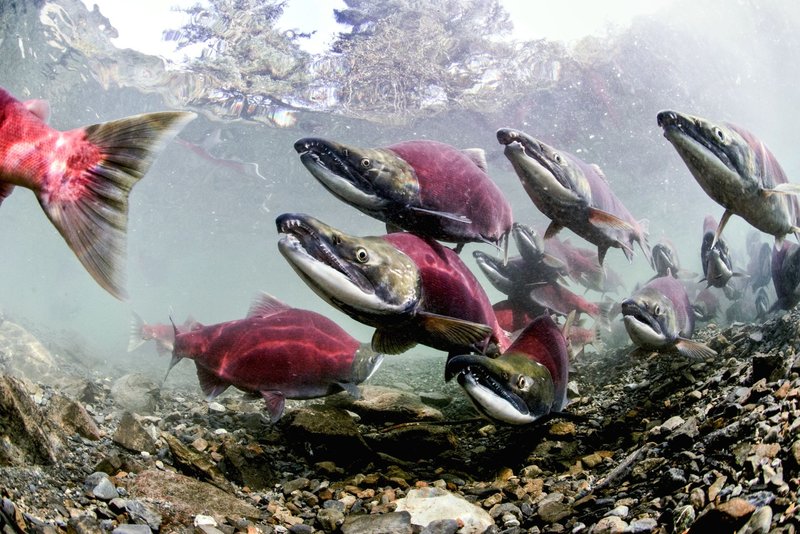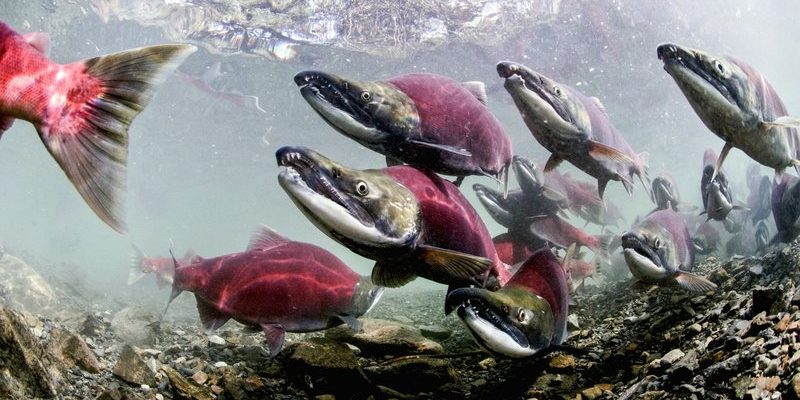
Let’s dive into the world of salmon breeding. If you’ve ever been curious about how it all comes together—from selecting the right fish to understanding their needs—this guide is for you. We’ll explore techniques, tips, and just a bit of the science behind it all, making the process accessible whether you’re a beginner or someone looking to refine their methods.
Understanding Salmon Biology
Before you start breeding salmon, it’s important to understand their biology. Salmon are anadromous fish, meaning they’re born in freshwater, migrate to the ocean, and return to freshwater to spawn. Each species has its own lifecycle, but generally, the journey starts when they hatch from eggs in freshwater rivers.
The two most commonly bred species are Atlantic salmon and Pacific salmon. Atlantic salmon generally have a more straightforward breeding cycle, making them popular in aquaculture. They grow quickly and can adapt well to various environments.
Pacific salmon, on the other hand, have a complex and unique spawning cycle. They usually die after spawning once, which adds a layer of unpredictability for breeders. Understanding these differences is crucial for planning your breeding strategy. You might wonder, why does this matter? Knowing the lifecycle tells you when to expect eggs, fry, and when to intervene to help their development.
Choosing the Right Broodstock
Selecting your broodstock is one of the most important steps in breeding salmon. Broodstock refers to the adult fish you’ll use to produce the next generation. Here’s the thing: You want healthy fish with desirable traits. Look for traits like size, growth rate, and disease resistance.
When choosing your stock, consider the following:
- Genetic Diversity: It’s essential to have a diverse gene pool. This means mixing strains if possible, which helps prevent inbreeding and ensures stronger offspring.
- Health: Healthy fish are more likely to produce robust eggs and fry. Regularly check for signs of disease or stress.
- Environment: The conditions the salmon are raised in should mimic their natural habitat. Stress can affect their breeding performance.
Taking time to select the right fish will pay off when your fry start to develop. Imagine having a thriving school of young salmon, knowing you made the best choices from the start.
Setting Up a Breeding Environment
Now that you’ve got your broodstock, it’s time to create the perfect breeding environment. Just like a cozy home helps you feel comfortable, salmon need a suitable habitat to thrive.
You’ll need to consider:
- Water Quality: Salmon are sensitive to changes in water quality. Regularly check temperature, pH, and oxygen levels. Ideally, they thrive in cool, clear water with a temperature between 50°F and 60°F.
- Space: Your breeding tank should provide enough space for fish to swim freely. Overcrowding can lead to stress and aggression.
- Substrate: Salmon prefer sandy or gravelly bottoms, which help them feel secure. Plus, it’s great for egg laying!
Think of this space as a haven for your salmon. The better their home, the more likely they’ll successfully breed and produce healthy young.
The Breeding Process: Spawning
When the time is right, spawning begins. This usually happens during the fall, but checking with your specific salmon species is essential. During spawning, female salmon lay eggs, while males fertilize them. The key here is timing and a bit of patience.
Here’s a basic breakdown of the spawning process:
1. Conditioning: A few weeks before breeding, condition your fish by feeding them high-quality food. This helps ensure they’re in the best shape to spawn.
2. Inducing Spawning: In some cases, you may need to induce spawning through hormonal treatments. This method should be done carefully; consulting with an expert is a great idea.
3. Egg Harvesting: Once the female lays her eggs, they’ll need to be carefully collected and placed in incubators or hatching trays.
During this stage, you’ll likely feel a mix of excitement and nervousness. Every care you take here counts towards the future generation of salmon.
Caring for Salmon Eggs and Fry
After spawning, it’s time to turn your attention to the eggs and fry. Providing proper care at this stage is crucial. Salmon eggs generally take a few weeks to hatch, depending on water temperature and species.
Here’s how to care for them:
- Temperature Monitoring: Keep a close eye on the water temperature. Too hot or too cold can affect hatching rates.
- Cleanliness: Regularly check for mold or fungus on the eggs. If you spot any, it’s essential to remove affected eggs immediately.
- Oxygen Levels: Ensure the water is well-aerated. Fry need plenty of oxygen as they develop!
As the eggs hatch into small fry, it’s a real joy to see. You might be surprised at how small they are at first! But with your care, they’ll grow stronger every day.
Feeding Strategies for Growing Fry
Once your fry are swimming around, they’ll need proper nutrition to grow. In the wild, they would feast on small insects and plankton. In your breeding environment, you’ll need to replicate this diet as closely as possible.
Here are some feeding strategies:
- High-Quality Starter Feed: Use specialized fry food that’s small enough for them to eat. Look for products that contain protein and essential fatty acids.
- Feeding Schedule: Young salmon need to be fed multiple times a day. Regular, small meals work best for healthy growth.
- Gradual Transition: As they grow, gradually introduce larger feed options. This helps them adapt as they develop their preferences.
Feeding can feel like a bit of a balancing act, but it’s also incredibly rewarding to see them thrive.
Common Challenges and Solutions
As with any breeding venture, you may encounter some challenges. It’s all part of the journey. Here’s a look at common issues and solutions to keep your breeding efforts on track.
1. Disease Outbreaks: If your fish show signs of illness, swift action is key. Quarantine affected fish and treat the water with appropriate medications. Regular health checks can also help you catch problems early.
2. Water Quality Issues: If you notice any sudden changes, test your water quality immediately. Use filtration systems and conditioners to help maintain a stable environment.
3. Overcrowding: Avoid cramming too many fish into one space, as this can lead to stress and aggression. If necessary, move some fish to prevent crowding.
By being proactive and observant, you can tackle these challenges as they come up. Remember, every problem has a solution, and learning to navigate these issues will make you a better breeder.
Final Thoughts on Breeding Salmon
Breeding salmon is not just about the science; it’s about the connection you build with nature. From choosing the right fish to nurturing fry into healthy juveniles, every step is a part of an incredible journey. And while you may face some bumps along the way, remember that every challenge is an opportunity for learning.
So, whether you’re dreaming of a thriving salmon hatchery or simply curious about the process, I hope this guide has given you a clear path forward. Enjoy the adventure of breeding salmon; it’s a rewarding experience that connects you with one of nature’s most fascinating creatures.

